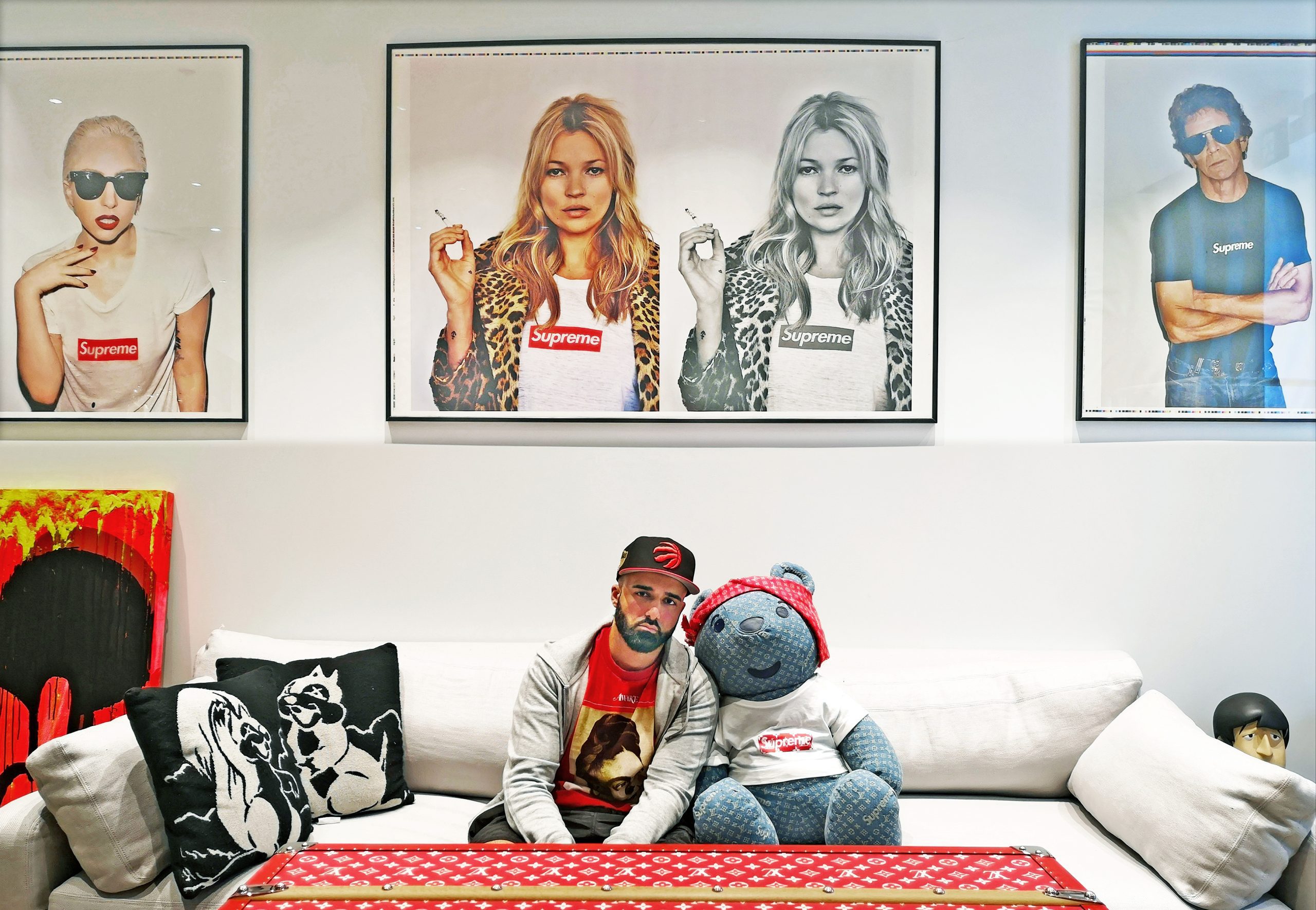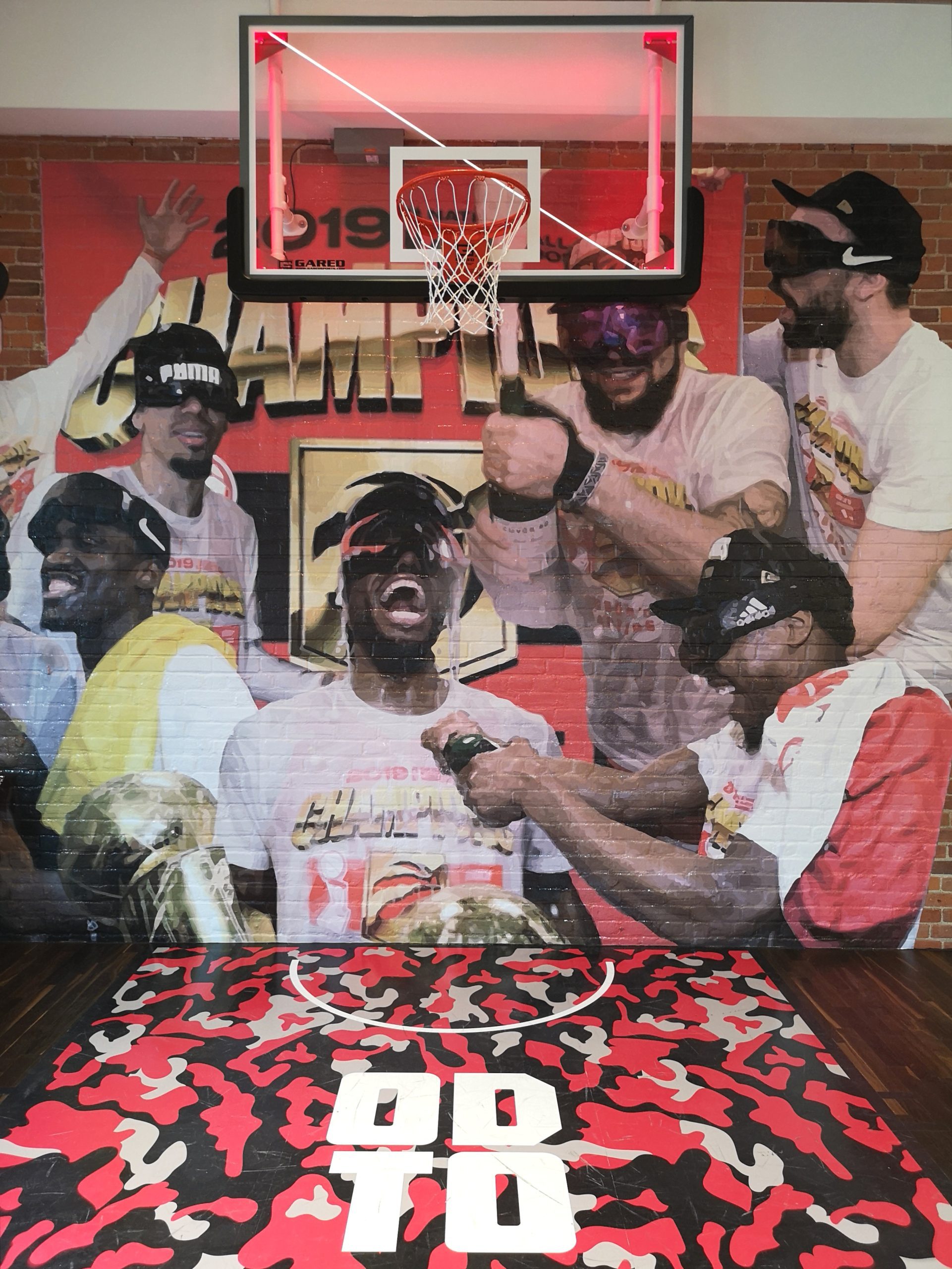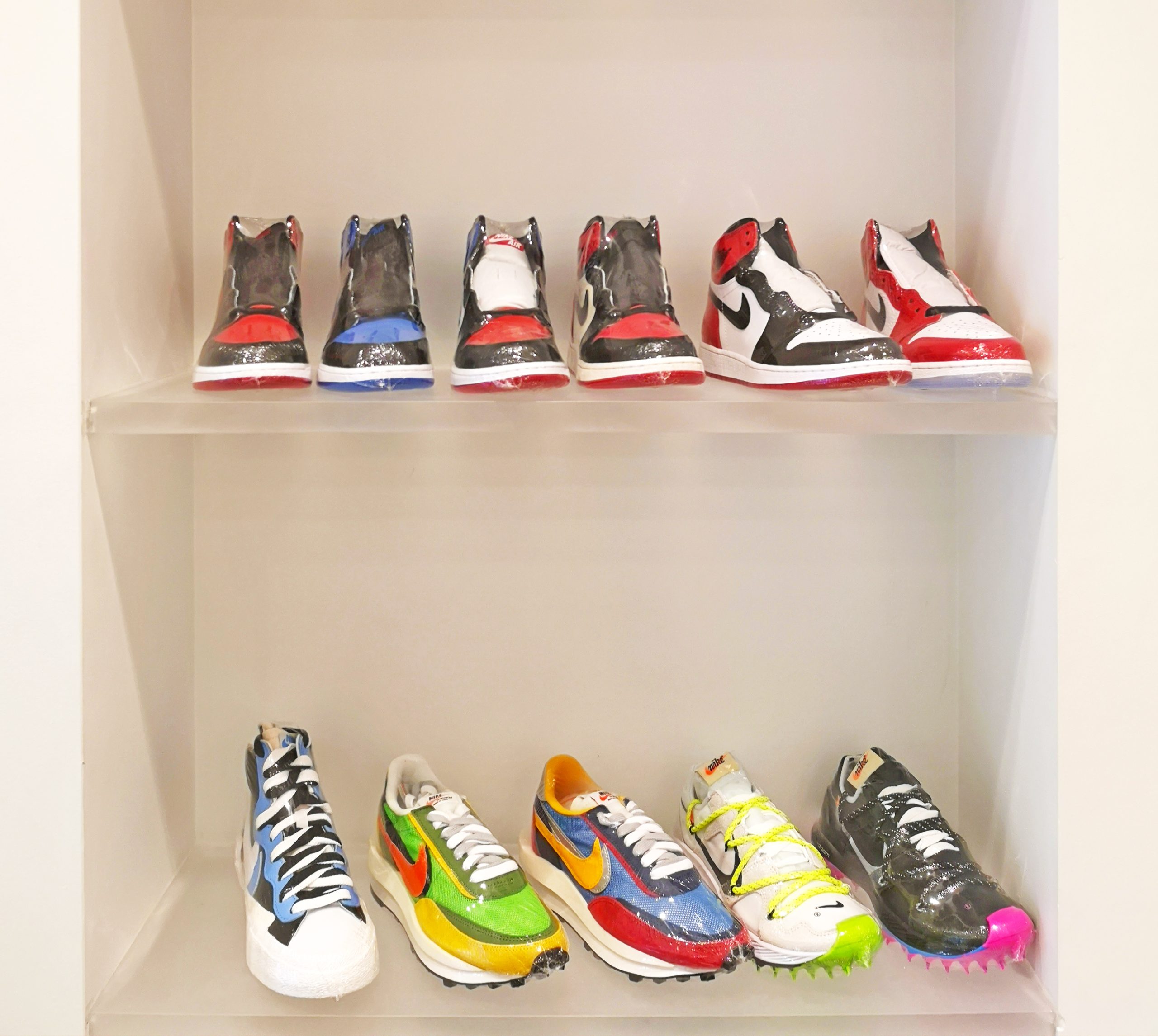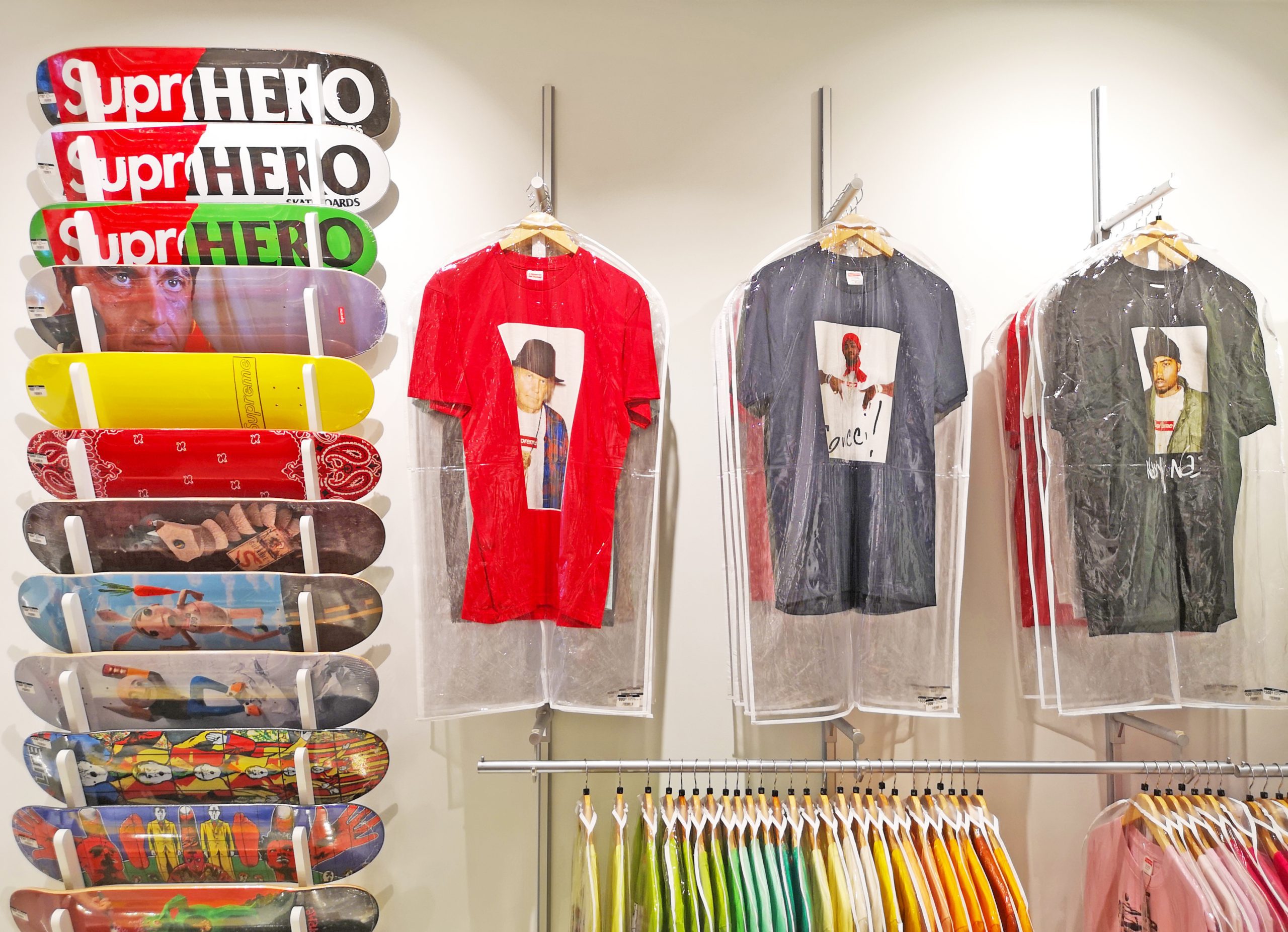We believe in supporting Canadian brands and products, not for the sake of it, but because our nation boasts some of the most top-notch brands and designers in the world. This week, a Queen Street West sneaker consignment store at a scale never before seen in Toronto.
OD Toronto is most widely known as the store with the Raptors mural on Queen Street.
Inside, this consignment shop has walls lined with some of the rarest and most desired sneakers on the planet with re-sell price tags from $200 to $5000.
Co-founded by Shahin Shamshiri and local graf artist Tetra, the shop is unparalleled in Toronto, bringing retail-turned-cultural-destinations to mind like Kith in New York and Dover Street Market in London.
From the Supreme pinball machine at the front door, the yellow Lamborghini parked behind the cash register, and the clear floor and glass cases showcasing rare products and pop art pieces in-between, OD Toronto is as much about re-selling, as it is a gallery of rare pop culture items, only ever seen by most in the pages of Hypebest.


They opened on Good Friday in 2019, steps from Much Music in a building that they own. The OD Toronto story begins 10 years ago, when sneaker collectors were part of a true sub-culture. “We started it as a business, because I was good at getting those sneakers,” says Shahin Shamshiri. A part of the friendship Tetra and Shahin is this dynamic; Tetra collected sneakers that he didn’t wear, and Shahin was able to secure them.
It was Tetra’s deep collection that served as the basis of the business that they started building four years ago. It was at that time that Tetra finally convinced Shamshiri that they could turn what they were already doing out of passion into a business, and that they could do it in a big way.
“I was always a collector, but I wasn’t envisioning this” recalls Shamshiri, “I was envisioning a small shop.” There is no precedent consignment shop of this scale in the city. “I wasn’t thinking this big,” tells Shamshiri, “my partner is the crazy one I keep him grounded as much as possible, and he is the one with the crazy ideas.”
A part of what has given them the competitive advantage they needed is stock and relationships that can’t be replicated if you are just getting into the business now.
“Ten years ago, you had to build rapport with the shop owners, you would actually meet them,” Shamshiri explains. He remembers putting in work and travelling for that access, which had its’ rewards. “As shoes got more popular, and there were bigger line-ups they would hold them for you, because you had been there from the beginning,” he says.
What can’t be understated in success of their launch as they collected and preserved rare and sought-after sneakers was that they were investing in a business they didn’t realize they were building. “Tetra doesn’t wear anything,” Shamshiri quips, “so that collection was the base of the business.”
Another factor that can not be replicated — or could have been planned for — was the Raptors 2019 Finals run that took over Toronto (and the country). The combination of the Raptors mural on facade of their building and wall inside the front door covered in a vinyl pasting of a crouching Kawhi from the shot that won game 7 against the 76ers gave people a place to add on to their memories of this epic playoff run.


“When we did it, everyone was like it’s this marketing genius plan, but it was less about marketing and more about doing it for the city,” says Shamshiri. “I get chills thinking about it,” he adds, “we’ve always been proud of being from Toronto, and we are just so proud of being a part of this moment.”
In terms of what it meant for sales, branding and traffic (online and in-person), Shamshiri says its’ incalculable. “In a million years, we couldn’t have gotten the timing. The stars aligned. There will never be something that worked that well ever again. It was that perfect,” Shamshiri says. He doesn’t know what percentage the Raptors run added to their bottom-line, but he knows it was a major factor, conceding whatever the exact number is, “it’s a humbling percentage.”
A part of how the timing worked out was patience and part of it was the core values of their business. Had it been up to them, they would have opened the shop years earlier. In Shamshiri’s words, they were telling people, “coming soon” for three years. Rather then caving to the pressure (internal and external) to open their doors, they waited until they got it right.
“There was a point where we were rushing construction,” recalls Shamshiri, “The mind set shifted to, ‘when it happens it will happen, let’s just make it perfect.’” Looking back to the decision to continue to push back their opening, the alternative in Shamsir’s mind is dire: “Can you imagine if we had of opened and it was just a regular shop? It would be embarrassing.”
That level of focus came out of clarity around what they saw as the factors that set their business apart: a consignment shop in Toronto on a scale the city has never scene with a love for Toronto at the heart of all they do.


“When we opened the shop, the mindset was always ‘this is for Toronto,’” says Shamshiri. They also looked at trends in the industry that pushed them to do things on such a grand scale.
“We saw a big shop like Kith and everybody else almost doesn’t really matter, they are just eating bread crumbs. So we had to come in like that, to be the big shop,” says Shamsir. They also knew they had to give people an experience. “It’s not like back in the day where you needed 20 shops because people liked shopping,” says Shamshiri.“People can just go online and buy, so you have to come in on this level to get that traffic.”
As much as their is hype around the idea of lining up or winning an online raffle to buy a pair of shoes for $200 and then flipping them for $1000, the business is not that easy. “The way people talk in this industry when you get to a certain level, everyone is trying to hustle,” explains Shamshiri, adding a warning in a very matter-of-fact tone: “when you first start off, people will get over on you, because you don’t know, you’re new to this.”
With the re-sell market taking off and investor, bank and corporate money getting into that game (Foot Locker put $100 million into the re-sell giant GOAT Group), what does Shamshiri advise someone that wants to get into the business now?
“See what’s not being sold, because there is a re-sell market for everything,” he shares, “something that you are passionate about can be a business and just focus on that – it could be the next thing.”
His advice to entrepreneurs also feels like a blueprint to his own entrepreneurial character.
“It doesn’t have to big scale” he says, “you can start small scale and meet people – you never know where meeting people will get you.” Insisting that meeting people is the key to any business, he warns against overlooking the value of gaining experience: “instead of spending three or four years figuring out what you want to do, you could have three or four years of experience in something.
Sharing from his own story: “Ten years ago, I was trying to be a photographer taking photos of sneakers in the park.” Drawing from his own lessons learned, he insists on taking action: “Just go do something,” he says,”and I guarantee if you do something, you will get somewhere.”
Of course, we couldn’t finish without asking Shahin about his favourite sneaker. He gave us two:
The New Balance Canadian Tuxedo that he designed because, as Shamshiri puts it, “what’s more Canadian then denim on denim?”
The Craig Sager Air Force 1 because of the storytelling in the design and the bigger purpose in proceeds of the sneaker going to cancer research, as he puts it, “all of that is why I loved sneakers in the first place.”








